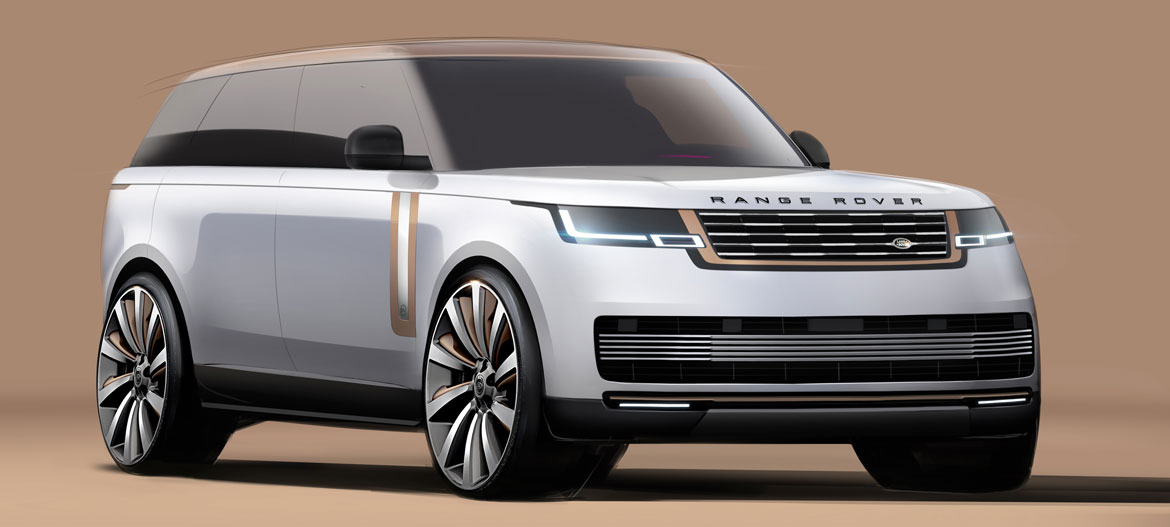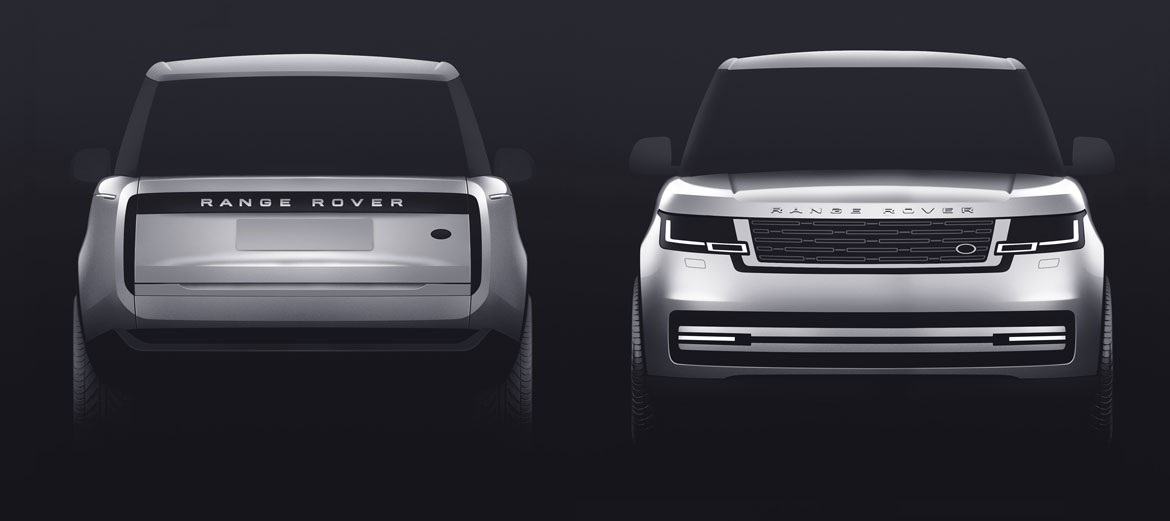Luxury products aren’t needed, they are desired. And desirability is one of the three founding pillars for the design of the new Range Rover, an expression of modern luxury according to Land Rover. The other two key concepts are integrity and purpose: they indicate how much modernist design culture and discipline on the part of the designers is behind such an admirable end result, that combines a strong identity with an extreme formal elegance.
“You can only improve it”
“Creating a new Range Rover is a challenge in terms of design,” explains Massimo Frascella, former head of exterior design for the brand and now Head of design for Jaguar and Land Rover: “You can’t change it, you can only improve it,” he observes as he explains the elements that have always been essential to making the model recognisable at a glance. “Seen from the side, you catch three clear-cut lines: the roof’s, which has a very gentle drop, the horizontal belt one’s, and the sill’s, which rises a little. Together they tend to converge at a point far beyond the tail.”
The ”boat tail”
As a completion of the Range Rover’s iconic image there’s the important yet uncomplicated front end with its accurate modernist design, the short front overhang, the clamshell bonnet, the vertical windscreen and the tapered boat tail, the latter being the result of a brave interpretation: the light clusters no longer wrap around the corners of the car and are even invisible when they are not lit, concealed by a glossy black panel that provides further elegance and sophistication to the rear view.
“Breathtaking in its modernity”
The overall impression is one of strong solidity, “it’s a car that looks milled from a solid block, but it’s not massive,” Frascella adds again. “One of my favourite details is the way we worked on the shoulder that connects directly to the flush glazing. It has a very structured curvature radius: it runs along the entire side and ends in the tail, where it contributes to the rear’s look.” For the interior, Gerry McGovern, Jaguar Land Rover Chief Creative Officer, speaks of “flawless consistency, which is breathtaking in its modernity. The Range Rover customer expects a sumptuous environment: let’s not forget that the Queen (Elizabeth II, Ed.) travels in a Range Rover.”
Calm and armonious ambient
What was needed was an environment that is stress-free, very harmonious, visually clean and sophisticated, as befits the model, explains Interior Design Director Alan Sheppard: “This quest for sophistication affected how we decluttered the fascia, with subtle vents and a much more intuitive use of technology. The goal was to create a calm sanctuary. We wanted to emphasise the sense of architectural lightness by reducing and grouping the controls. The large central screen is free, because integrating it would have meant creating a massive element.” Also unmissable is the dominant driving position typical of Land Rovers, with a head position that offers an ideal view. But no passenger has been left out, Sheppard explains further: “Even for the seven-seater versions, everyone benefits from the same sense of prestige and calm.”
Modern luxury and sustainable
Modern luxury must also be sustainable, because those who can afford such a car want to enjoy it without any guilt. Amy Frascella, Colour and Material Design Director at Land Rover, explains how the British brand is well versed in the matter: “With the pandemic the demand for sustainability has increased. We, at Land Rover, were already well ahead thanks to the Materiality programme started in 2017. We offer premium textile alternatives even for the highest trim levels. But it’s not just about using less leather, it’s a philosophy that looks to the future and at how innovation crosses with technology.” The Kvadrat wool-blend upholstery combined with the Ultrafabrics technical material, for example, is consistent with the new Range Rover’s modernism.
(Full article in A&D n. 256)
















